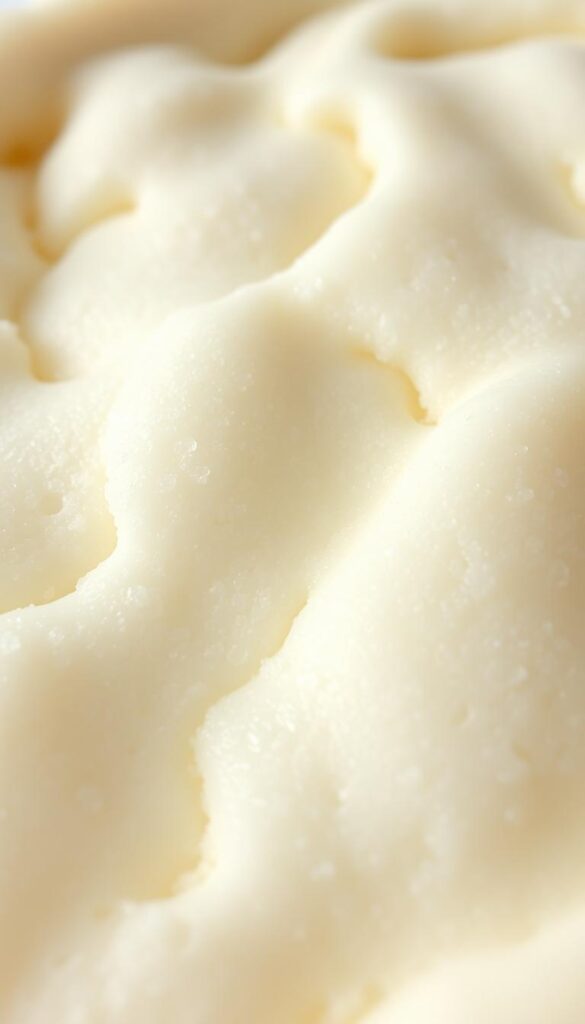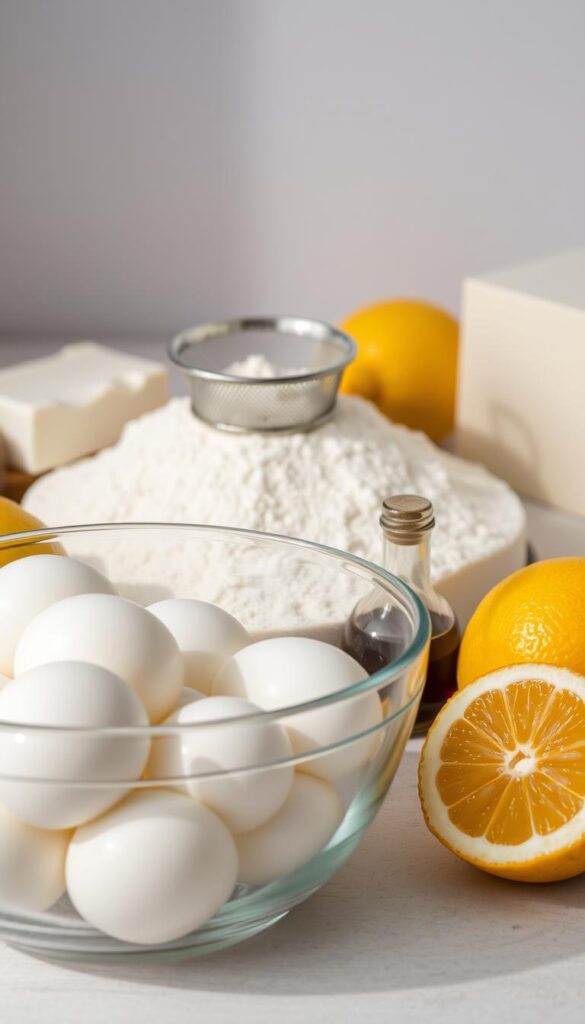Ever wondered why Japanese cheesecake is so different from Western desserts? This amazing Japanese dessert is about to change how you see baking.
The Japanese cheesecake is a true marvel of cooking. It’s not like the dense, rich cheesecakes from America. Instead, it’s incredibly light, almost like a cloud. It comes from Japan and has won the hearts of many with its special qualities.
Picture a cheesecake so light, it might just lift off your plate. That’s what makes Japanese cheesecake so special. Its airy texture is unlike any other baked good, offering a unique taste experience.
This Japanese dessert is not just a sweet delight. It’s a symbol of Japanese cooking’s focus on simplicity and elegance. It celebrates the beauty of texture and subtle flavours.
Understanding the Magic of Japanese Cheesecake

Desserts get a special twist with Japanese cheesecake. It’s different from traditional Western-style cakes. This cake is light and melts in your mouth.
The Japanese cheesecake’s texture is unique. It’s made by carefully preparing ingredients. This turns them into a soufflé-like dessert.
Imagine a cake so light it seems to float. It has a delicate jiggle that catches your eye and taste buds.
Preparing this cake involves whipping egg whites into a meringue. This makes the cake airy. It’s unlike Western cheesecakes.
Your Japanese cheesecake will be soft and cotton-like. Each bite is a joy.
Baking this dessert needs precision. It’s about how egg proteins, cream cheese, and meringue mix. The result is creamy yet light. It shows Japanese culinary skill.
Essential Ingredients for Perfect Japanese Cheesecake

To make a real japanese jiggly cheesecake, you need top-notch ingredients. Cream cheese is the core of this dessert. Philadelphia cream cheese is the best for its smooth texture in a japanese fluffy cake.
Eggs are key for the cake’s light, airy feel. Use large eggs, focusing on the yolks. The quality of your egg separation affects the cheesecake’s texture.
Sugar is vital for stabilising the meringue and adding sweetness. Fine granulated sugar is best. A bit of salt can also improve the flavour, balancing the sweetness.
Choosing the right flour is crucial for the cake’s structure. Cake flour or cornflour is ideal, creating the cheesecake’s unique jiggly texture. Cornflour keeps the cake light and prevents it from becoming dense.
Vanilla extract adds depth to the flavour, but use it sparingly. You want to enhance the cream cheese’s taste without overpowering the cheesecake’s delicate flavour.
Mastering the Art of Meringue Making
Making the perfect meringue is key for a Japanese cheesecake. Your meringue technique makes the cake light and airy. Unlike other cakes, aim for soft peaks, not stiff ones.
Begin by carefully separating your egg whites. Eggs at room temperature are best for a smooth meringue. Use a clean, dry bowl to whip the whites. Add sugar slowly while whisking to create a stable foam.
The goal is a glossy, soft-peak meringue. This will give your Japanese cheesecake a cloudlike texture.
Look for visual signs when whipping your meringue. It should be smooth and form gentle peaks. These peaks should slightly droop when you lift the whisk. Avoid overmixing to prevent a dense cake.
Practice is essential for mastering meringue. Take your time and focus on each step. Your patience will pay off with a stunning, light-as-air cheesecake.
The Water Bath Technique Explained
The water bath technique is key to making a perfect japanese cotton cheesecake. It turns a simple bake into a luxurious dessert. Cheesecake experts in London use it to achieve a silky texture.
Using a water bath, or bain-marie, means placing your cheesecake pan in a bigger pan with hot water. This method stops direct heat from causing cracks. The warm water around the cake ensures it rises evenly and stays jiggly.
To set up, choose a deep baking tray that’s bigger than your cake tin. Wrap the cheesecake pan in aluminium foil to keep water out. Fill the bigger pan with hot water, making sure it’s halfway up the cake tin. This method ensures a uniform bake and avoids surface cracks.
Experts say to use boiling water for the best results. The steam makes the cheesecake light and fluffy, like a cloud. Your patience will pay off with a dessert that’s incredibly soft.
Crucial Equipment and Pan Preparation
Choosing the right equipment is key for a tasty Japanese cheesecake. These desserts need special tools to get their light and airy texture.
You’ll need a one-piece cake pan without seams for your Japanese cheesecake. Avoid springform pans as they can let water in. A solid, leak-proof pan keeps your cake moist and even.
Parchment paper is your ally in baking. Line the pan’s bottom and sides to prevent sticking. Bakers suggest cutting the parchment with clean edges for a smooth cake look.
You’ll also need an electric mixer for the meringue, a kitchen thermometer, and flexible silicone spatulas. These tools help make a Japanese cheesecake that looks great and tastes amazing.
Good equipment makes a big difference in your Japanese desserts. Make sure you have these special tools before you start baking.
Step-by-Step Mixing Process
Making the perfect japanese cheesecake needs care and precision. Your mixing skills affect the cake’s texture. Begin by softening your cream cheese with room-temperature ingredients for a smooth mix.
Start whisking the cream cheese until it’s soft and lump-free. Then, add egg yolks one by one, blending each well. This step is key for the cake’s light and airy texture.
Folding the meringue into the cheese mixture is the most important part. Use a spatula to mix slowly, cutting through the middle and scooping from the bottom. This helps keep the air bubbles that make the cake so fluffy.
Be gentle but thorough when folding. Rotate the bowl as you mix to avoid deflating the egg whites. Stop when the batter is even and there are no egg white streaks.
Getting better at this recipe takes practice and patience. Each fold brings you closer to a dessert that’s light and delicious. It will impress anyone who tries it.
Temperature Control and Baking Times
To make the perfect japanese jiggly cheesecake, you need to control the temperature well. The oven’s settings are key to the cake’s softness and how high it rises. Begin by heating your oven to 200°C. This helps the cake rise beautifully.
The water bath method is vital for your japanese fluffy cake. Put your cake pan in a bigger tray filled with hot water. Place it on the bottom rack of your oven. This method stops the cake from cracking and bakes it evenly. Bake at the high temperature for about 18 minutes.
Then, lower your oven to 140°C. This slow drop in temperature is what makes the cake jiggly. Keep the oven door shut for 30 minutes. This lets the cake cook gently with the remaining heat.
Every oven is different, so you might need to make some changes. Use an oven thermometer to check the temperature accurately. Keep an eye on your cheesecake while it’s baking. Look for a golden top and a slight wobble in the middle. This means it’s cooked just right.
Troubleshooting Common Texture Issues
Making the perfect Japanese cheesecake needs skill and precision. If your cake doesn’t turn out right, knowing about common texture problems can help. Cracks often happen because of overmixing or wrong oven temperatures.
The meringue is key to getting that light texture. If it’s not whipped enough, the cheesecake might sink or feel dense. Make sure to beat the egg whites until they’re stiff, creating a stable foam that keeps the cake light.
The oven temperature is crucial for your cheesecake. Too hot can cause it to rise too fast and crack. Try using a water bath to keep the heat steady. Start with a lower temperature and don’t open the oven door while it’s baking.
Using room-temperature ingredients is important. Eggs and cream cheese that are at room temperature mix better, avoiding lumps and giving a smooth texture. If your cheesecake cracks, you can cover it with icing sugar or fresh berries to hide it.
Getting better at making this dessert takes practice and patience. Every try brings you closer to making a Japanese-style cheesecake that’s light, fluffy, and delicious.
Serving and Storage Recommendations
Your Japanese cotton cheesecake is best when chilled. In London’s patisseries, it’s often topped with icing sugar or fresh berries. Serving it plain lets you enjoy its unique texture fully.
For clean slices, use a warm knife. Wipe it clean between cuts to avoid crumbling. London’s top bakers suggest serving it cool to bring out its flavours.
Store your cheesecake in a sealed container in the fridge for three days. For longer storage, wrap it in cling film and freeze for two weeks. Thaw it slowly in the fridge to keep its light texture.
Adding toppings can make your cheesecake even better. Try whipped cream, honey, or apricot jam. These enhance its flavour without overpowering it. Find your favourite way to serve it.

